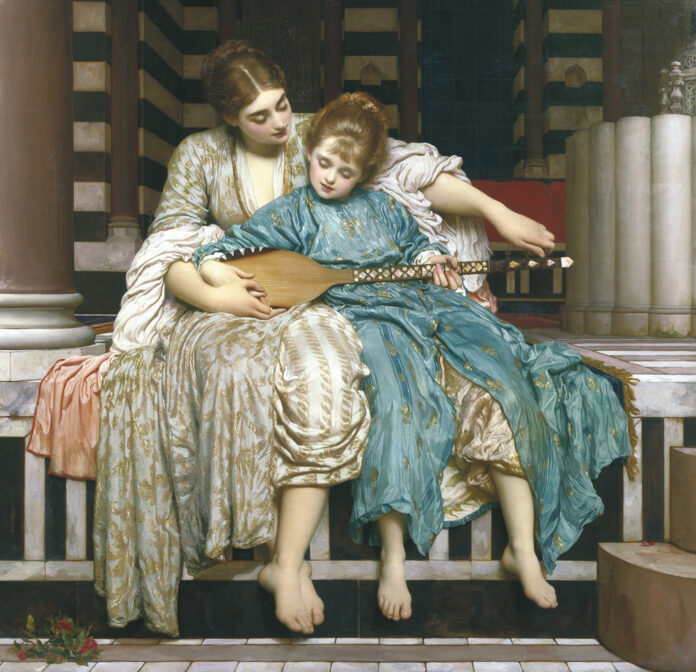
International Conference Organized by
Centro Studi Opera Omnia Luigi Boccherini
IAM – Italian Institute for Applied Musicology
Palazzetto Bru Zane – Centre de musique romantique française
————
Lovere (BG), Accademia di Belle Arti Tadini
Sala Affreschi, Piazza Garibaldi 5
28-30 November 2025
CALL FOR PAPERS
The Centro Studi Opera Omnia Luigi Boccherini, the Institute for Applied Musicology and the Palazzetto Bru Zane – Centre de musique romantique française are pleased to invite submissions of proposals for the symposium «Children’s Music in the Nineteenth Century», to be held in Lovere (BG), Accademia di Belle Arti Tadini, from Friday 28 until Sunday 30 November 2025.
Music composed specifically for children can have a playful, entertaining, or pedagogical intent. In the nineteenth century, especially, it was used to provide children with a cultural moment in a fun way, increase their skills, as well as to teach good manners. The development of children’s music is closely connected with the concept of domestic music and gender ideology. As Roe-Min Kok (2010) argues, «by the mid-nineteenth century, ‘home’ was largely a female space that reflected the moral, emotional, and affective outlook of the mother. Mothers presided over home-centred rituals» and child-rearing. For this reason, many of the titles of children’s music depict this predominantly female, domestic and private realm.
The technological development associated with the Industrial Revolution expanded the production of domestic and educational music. In 1995, Isabel Eicker listed in her monograph (Kinderstücke: An Kinder adressierte und über das Thema der Kindheit komponierte Alben in der Klavierliteratur des 19. Jahrhunderts) about 750 albums of piano music for children by more than 400 composers of the 19th century, many of them little known today.
Until the 1830s, children’s music published for didactic purposes had titles that referred to classical genres, such as rondos, variations, sonatinas (famous ones by Clementi, Diabelli, Dussek, Heller, Kuhlau, etc.), dances (waltzes and the like), arrangements of simple opera melodies, etudes, and progressive exercises (such as the well-known ones by Carl Czerny or the New Practical School Op. 100 by Johann Baptist Cramer).
After the 1840s, on the other hand, the miniatures became very famous, a series of pieces that were very reminiscent of Schumann’s Kinderszenen Op. 15 or Album für die Jugend Op. 68 — among them Heinrich Grosse’s Bilder für die Jugend Op. 1 (Leipzig 1849), Carl Haslinger’s Jugend-Album Op. 53, (Vienna 1849), or Carl Gottlieb Reissiger’s Bilder aus der Jugendzeit Op. 192 (Dresden 1850). Women composers also published albums of this type: among them are Cécile Chaminade’s Children Album Op. 123 and Op. 126, or Amy Beach’s Children’s Carnival Op. 25 and Children’s Album Op. 36.
Examples of this kind can obviously be found in the literature of many instrumental families (strings, woodwind, brass, etc.). Vocal music for children also developed considerably, including simple opera melodies, nursery rhymes and folk songs. In addition, choral repertoire became very extensive towards the end of the nineteenth century, with the demand for choral works for educational use in primary schools. Operas and operettas were also composed throughout the nineteenth century. Catalogues such as that of Novello, England, included more than 50 operettas that were entertaining and morally safe (see the entry ‘Children’s Opera’ by Hugo Cole in Grove Music Online).
The programme committee encourages submissions within the following topics, although other topics related to the general theme of the conference are also welcome:
- Pedagogical Works for Children and Technical Skills
- 19th-Century Treatises and Literature for Children
- The Sonatinas and Other Solo Repertory
- Chamber Repertory
- Women Composers and Music for Children
- Publishers of Educational Music
- Choral Works
- Songs, Melodies, Lullabies
- Children’s Opera and Operetta
Programme Committee:
- Roberto Illiano (Centro Studi Opera Omnia Luigi Boccherini)
- Étienne Jardin (Palazzetto Bru Zane – Centre de musique romantique française)
- Massimiliano Locanto (Università degli Studi di Salerno)
- Fulvia Morabito (Centro Studi Opera Omnia Luigi Boccherini)
- Massimiliano Sala (Centro Studi Opera Omnia Luigi Boccherini)
Keynote Speaker:
- Roe-Min Kok (McGill University)
The official languages of the conference are English, French and Italian. Papers selected at the conference will be published in a volume.
Papers are limited to twenty minutes in length, allowing time for questions and discussion. Please submit an abstract of no more than 500 words and one page of biographical information.
All proposals should be submitted by email no later than ***13 April 2025*** to <conferences@luigiboccherini.org>. With your proposal please include your name, contact details (postal address, e-mail and telephone number) and (if applicable) your affiliation.
The committee will make its final decision on the abstracts by May 2025, and contributors will be informed immediately thereafter. Further information about the programme and registration will be announced after that date.
For any additional information, please contact:
Dr. Massimiliano Sala
conferences@luigiboccherini.org
www.luigiboccherini.org








